There is a large ocean of uses and possibilities for the hospitality industry and digital signage. Through the use of digital displays and well-planned content, digital signage provides a proven channel for capturing the attention of your audience and enhancing their experience. Hospitality digital signage gives organisations the power to engage guests with live messaging in real-time, and can also be a catalyst for increasing the sales of products, services, and promotions at your organisation.
From hotels, bars, hostels, and takeaways to large resorts, airports, nightclubs, and theatres, digital signage is changing the game. In this blog, we cover 8 ways organisations in the hospitality industry are using screens to enhance guest experience, optimise their operation, or supercharge their communication.
1. Automatic Check-In Screens
We’ve all been there. After a long journey we finally arrive at the hotel or resort and just want to crash… But before we do, we need to check-in first. We get to the reception area and there’s a long and frustrated queue of tired travellers already waiting to be checked-in and given their room key. Not only can this result in frustrated guests, extra strain is put on staff. As a result, the staff may not be able to give the world-class customer service they want to, in order to clear the queue. So how can this issue be resolved?
Digital check-in kiosks are becoming commonplace for hotels, resorts, and even hostels. Through an interactive digital display or digital kiosk, guests can automatically check-in themselves. This technology also encourages walk-ins too. A potential guest can use the kiosk to browse available rooms, pay, and check-in in minutes. Thanks to clever software, guests that are checking-in can even be upsold (e.g. add breakfast for £5 (50% off)), which can be a great way to increase your revenue.
Don’t forget these screens can be used for checking-out too. This can be particularly useful to guests who are in a rush or want to avoid a large queue of guests at reception.
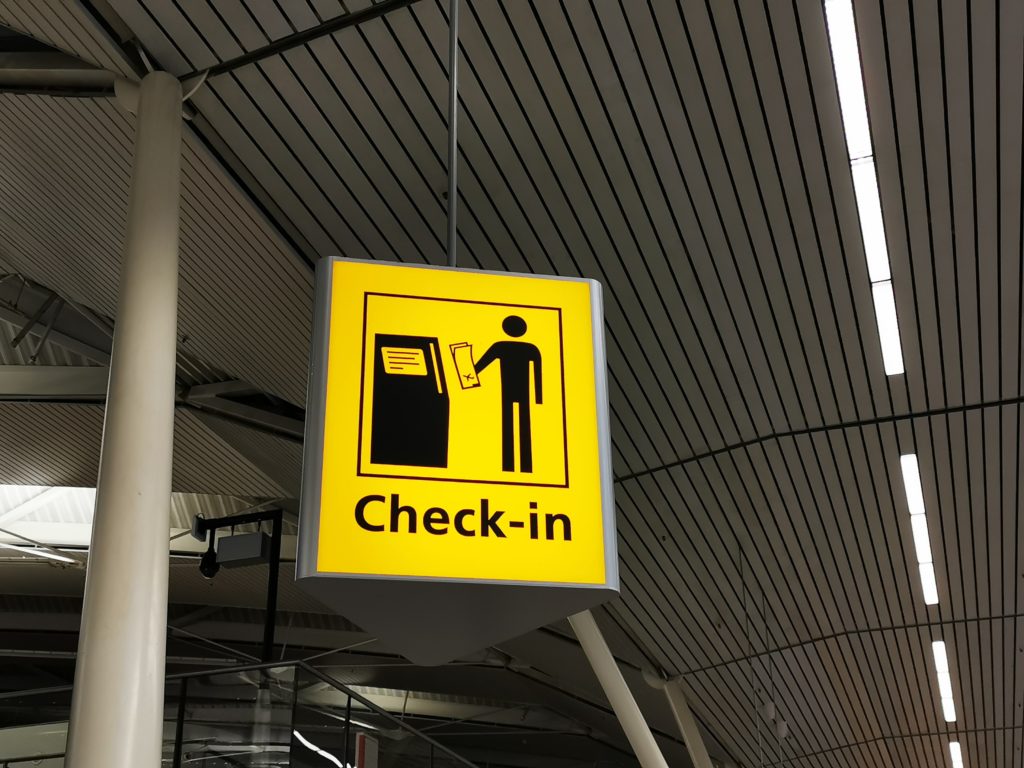
2. Digital Menu Boards for Hospitality Digital Signage
Ensuring food and drink offerings are enticing is at the foundation of any successful hospitality-based organisation. Food and drink offerings that aren’t clear, are out of date, or don’t look good can seriously damage your success. Guests and customers can be easily put off or won’t know about a particular item on the menu. This can result in a loss of revenue and more importantly a bad experience. Enter the digital menu board.
Many modern establishments have already installed digital menu boards at their restaurant, bar, café, or hotel. Whether it’s to automate their menu process, increase the attractiveness of food and drink, or push specials, more establishments are reaping the benefits of a digital menu board. The benefits mostly stem from the variety of features and increased usability from using a digital solution versus a traditional static board. Thanks to digital signage software, hospitality establishments are able to use video and animations to enhance the presentation of food, schedule menus for different times of the day, and utilise video walls to capture the attention of hungry customers.
Want to learn more about digital menu boards? Read our blog on how restaurants are using digital menu boards.

3. Digital Information Hub
Another popular use of hospitality digital signage is digital information hubs. Through the use of an interactive display or a digital kiosk, guests and users can find out more about the place they are, book events, or find out more. Digital information hubs are most commonly found in the lobbies of hotels. The guests can use the same screen to check-in, book activities, look at the restaurant menu, use a digital wayfinding map, or learn more about the hotel/surrounding area. These screens can really add a lot of value to your hospitality-based organisation.
The foundation of success for a digital information hub is all in the planning. If you are looking to integrate a digital information hub at your hospitality-based organisation, you’ll need a clear plan, including the goals you want to achieve and what customers will be using the screens. It’s always best practice to speak to your digital signage provider first, to ensure a successful project.
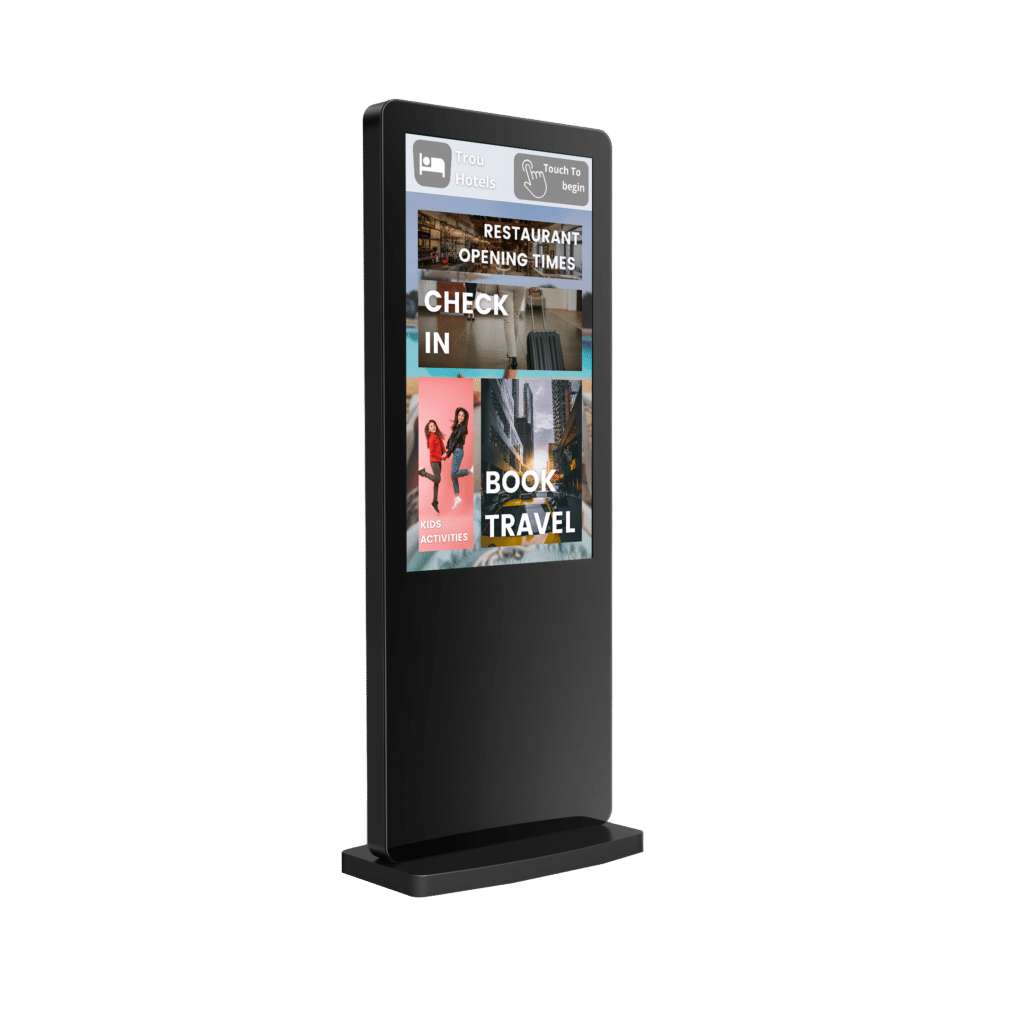
4. Welcome Screens in the Lobby or at Reception
For any organisation based within the hospitality sector, a positive guest experience is key. To keep on top of their game, organisations within the sector are constantly asking for feedback to ensure they are providing the best experience possible. For your guests, there is an unlimited number of ways that help them determine whether they had a good or bad experience with you. For example, it could be something like how quickly it was to get seated at a restaurant, or could be something as small as getting a chocolate on the pillow. Either way organisations in this sector like to ensure they have all their bases covered.
There are many ways hospitality digital signage displays are adding value and enhancing guest experience (which you’ll find out after reading this blog). One popular way, however, is installing welcome screens in the reception. These displays are especially common for welcoming important guests. For example, if you know that the England football team is checking in to your hotel at 4 pm you can schedule welcome content to play when they arrive. This can make them feel at home and kick their stay off to a great start.
Welcome screens can also provide a lot of added-value for your guests. Include content such as local news, live weather forecasts, and social media to engage with your guests and keep them informed. If they see that the weather is going to be hot for their stay, guests may be more inclined to book more activities.
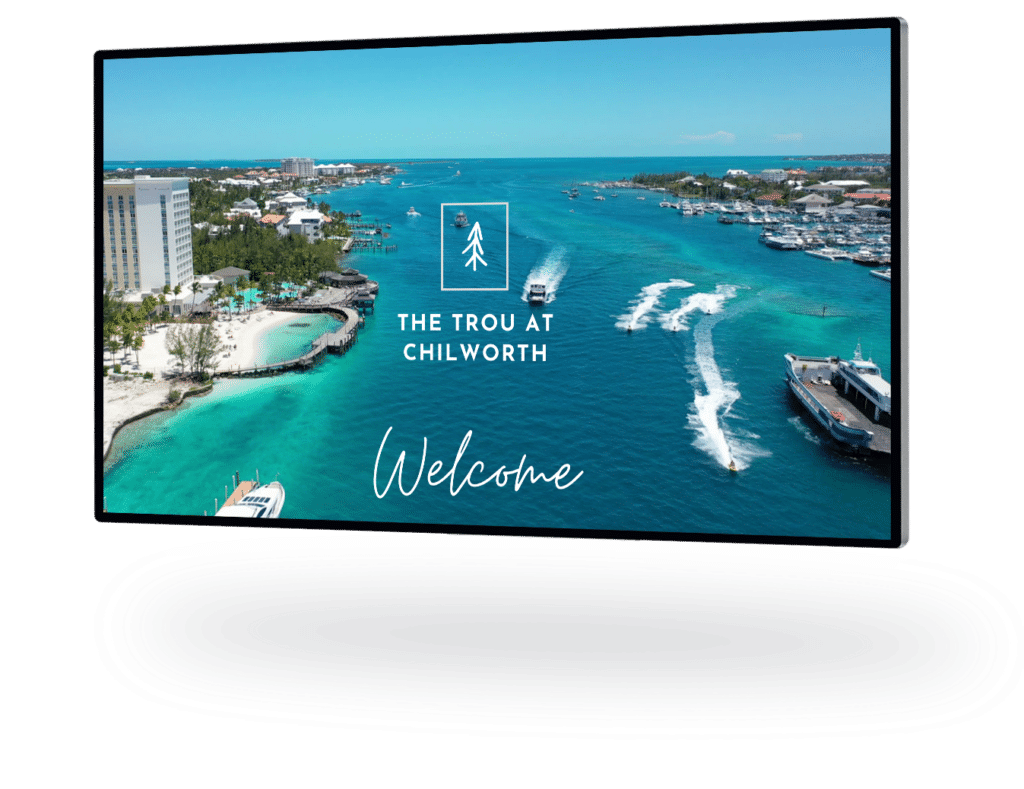
5. Area-Specific Screens
Another great way to add value at your hospitality-based organisation is to include area-specific screens. Essentially, these screens feature content that is specific to a section of the organisation. This could be the bar, restaurant, bar, gym, spa, reception etc. In many cases, some digital signage users will use the same content for all of their screens. They’re missing a serious trick.
By customising content for each section you increase the relevancy of your screens. For example, guests visiting the spa will have content relevant to their spa session. This could be upselling specific treatments, displaying spa opening times, or showing videos of different treatments to entice customers. As a result, these screens are more likely to experience engagement from your guests. It’s fair to say if someone is using your restaurant they are probably more focussed on your food and what they are going to eat rather than spa content.
Through digital signage software, these screens can all be controlled from one location. You don’t need to traipse to each screen and change the content yourself. You can even automate the screen’s content through digital signage scheduling. This saves your establishment a valuable amount of time and money, allowing you to focus on further enhancing your guest’s experience.
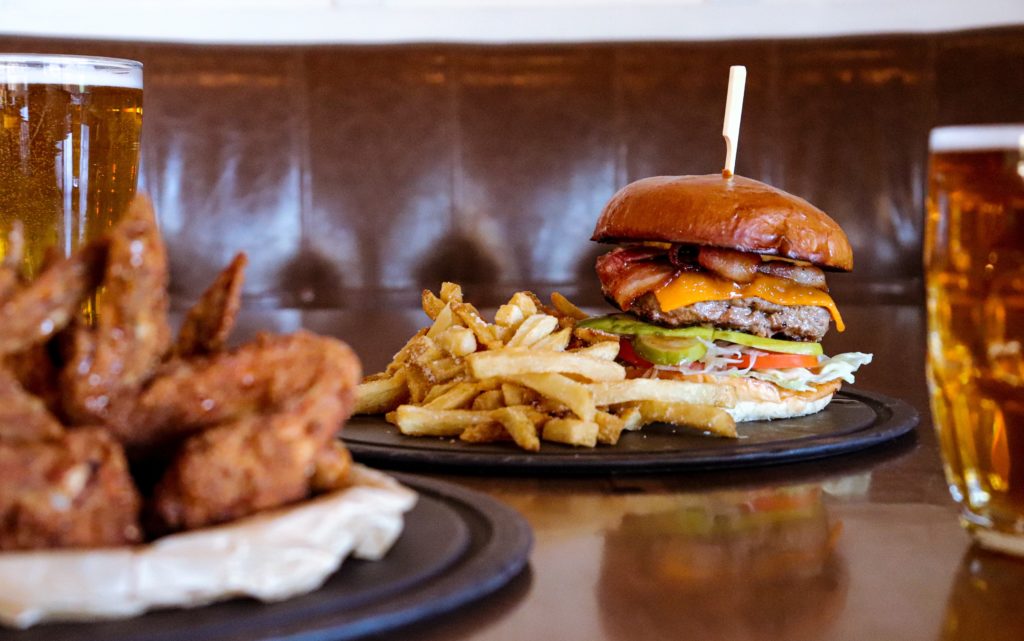
6. Live Calendar Display
All of us have a different idea of what a holiday is. Some prefer to lie down, cut off, and relax, whereas others prefer to pack as many activities into their break as possible. However, we choose to spend our holiday, we want to make the most of it!
Digital signage software is able to integrate with live calendars such as google calendar and display the live calendar right on your screens. These screens can be situated in the lobby, at activity areas, or even directly in a hotel room. They’re a great way to increase awareness of ‘what’s on’ and encourage more guests to sign up or participate. As a result, you can create memorable experiences for your guests and increase your revenue.

7. Digital Wayfinding for Hospitality Digital Signage
Digital wayfinding has taken industries across the globe by storm, extending to hospitality. Sometimes hotels and resorts are huge places, meaning it’s easy to get lost! Being able to navigate your establishment with ease will be a large part of ensuring a positive experience for your guests.
Digital wayfinding involves using digital screens to direct guests from one location to another. These screens can be either normal displays with arrows pointing where to go, or can be fully-fledged interactive digital kiosks. With a digital kiosk, a user can search their destination and will be provided with specific instructions of where they need to go.
In most cases, large hotels and resorts have digital wayfinding screens located on each floor, in the lobby and larger areas of buildings. Being able to provide streamline navigation for your guests is key to them having a good time. You don’t want the highlight of someone’s stay to be getting lost!
Successful hospitality digital wayfinding projects require careful planning and expert advice. We recommend you talk to your digital signage provider before embarking on a digital wayfinding project.
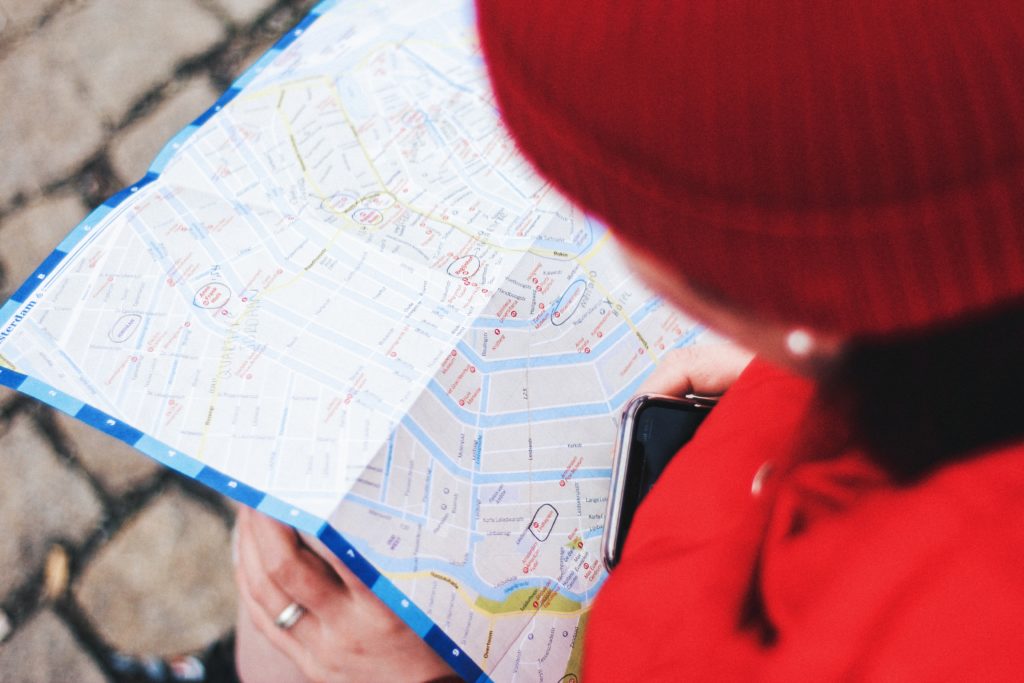
8. Using Live TV Hybrid Screens With Hospitality Digital Signage
For hotels, bars and restaurants, live TV can provide an excellent source of entertainment for guests and customers. From live sports, to films and concerts, TV is a tried and tested method that keeps us entertained. But how well does digital signage work with live TV?
Clever digital signage software can now integrate live TV amongst other content. This is highly popular in bars where the bar can advertise drinks specials or upcoming events, alongside a sporting event. As a result, it’s a great way to increase sales and add additional revenue to your bar.
With hospitality digital signage software, live TV content can be displayed synchronously with your standard digital signage content and messages. For example, when there isn’t an event on TV, the screens can switch back to acting as digital menu boards, promoting drinks offers etc.
Want to lean more about using live TV on your screens? Read our live TV digital signage blog post now.
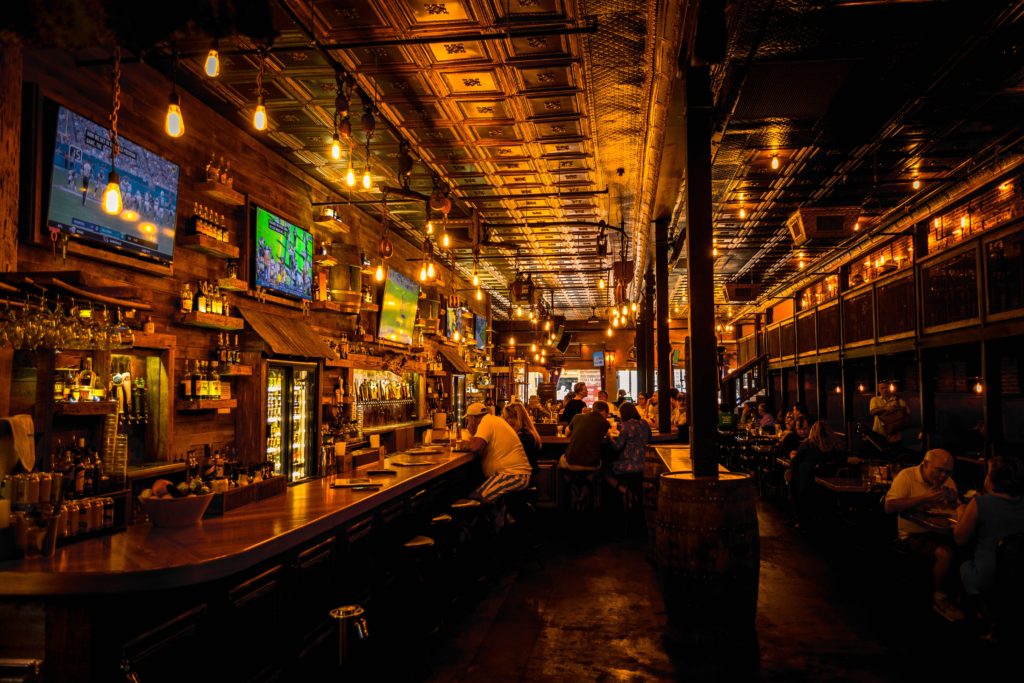
If you have any questions related to hospitality digital signage, speak to an expert today. Call our friendly team on 02380 981110 or Email info@troudigital.com for a no-obligation consultation. Alternatively, click the button below.
